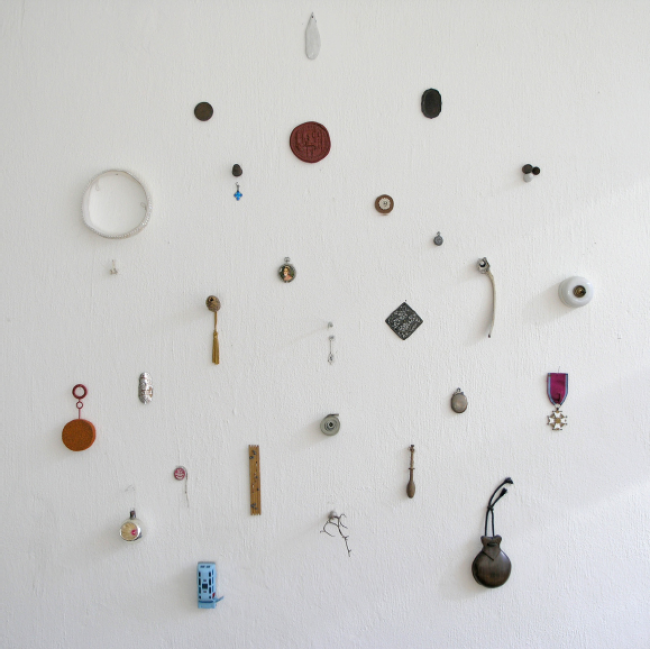As part of my Guest Editorship for Practice.ie I will talk about a project called ’My body is my home’ by the visual artist Ulrike Bartels. I met Ulrike in 1999 when we were both selected from freshly graduated art students in the Netherlands, to make a piece of work (together or separately) for a duo exhibition in an art gallery. We choose to collaborate. We felt it was a successful collaboration in terms of both the work we made and the way in which we worked together. During and since her art education Ulrike Bartels’ work has been about the affiliation people have with objects that are dear to them. The people participating in her projects are both subjects and collaborators. She not only works with children but with people of all ages and very often in and around their places of residence. It seems to me, that while developing ’the work’, she comes in very close contact with the objects that are important to her subjects / collaborators. Her background is in jewelry design. I see in Ulrike Bartels a huge fascination for what is precious both in objects, (often beautifully handcrafted) and in the personal value we humans attach to our belongings. In my opinion this drives her work. I must ask her if she finds my observation correct.

The project ’My body is my home’ was developed with pupils from group seven and eight (fifth and sixth class in Irish terms) from the islamic primary school, Al Wafa in Amsterdam and the residents of care centre for the elderly De Boeg in Amsterdam. The participants came together for eight workshops between February and April 2008. Ulrike Bartels artistically directed the workshops. The elderly people came each week to the Al Wafa primary school to work creatively with the children after school. There were 21 participants in total, 15 children and 7 old people. The elderly participants were mainly born and bred in Amsterdam, and although most of the children were also born in Amsterdam, their parents or grandparents would have come from Turkey, Morocco, Egypt and Tunisia for example.
The theme was ’My body is my home’. The primary questions that were posed during the workshops were:
- How do you feel in your own body?
- What sort of images do you see if you look inside and listen to you body?
- What do you need to feel good inside your own skin?
To work around this theme Ulrike Bartels confronted the elderly people with the increasing fragility of their own bodies. The children were confronted with not yet having fully developed bodies, and also not yet having discovered the full potential of their bodies. For Ulrike Bartels it was interesting to see the participants developing (what for them were) new forms of expression, especially considering the fact that the Islamic children were not accustomed to making images which are literal translations of their own bodies. Each of the participants worked hard to make an artwork which was ’their own’ interpretation of the theme. The works were exhibited in the Al Wafa primary school and at the care centre De Boeg. Both of these locations were very accessible to the local residents, and family of the participants.
The creative process of the participants was the central point of the project. As a starting point Ulrike used her own production methods, knowledge, resources, and inspiration to plan ’My body is my home’. The emphasis lay in what can be gained from one’s experiences. The participants discussed their cherished memories and belongings. Through a creative exercise each participant was given the opportunity to share in the perception of an experience of another participant. So each child got a look inside the world of an older person and vice-versa. This also functioned as a way to break the ice between the two groups. The participants were encouraged to experiment with different types of materials and everyday objects and through doing so, form ideas for a personal art work. Because the techniques, materials and way of working was new for them it was therefore sometimes quite challenging, yet everyone managed to make a special and personal art object. The children and old people alike hope to work together again on another art project.
What strikes me as interesting about this project is that a group of Islamic children and ’old’ Amsterdammer’s gained and shared insights into their own and each other’s daily existence through making a personal artwork. Both groups live in the same neighborhood but due to factors such as age, religion, cultural differences and lack of interest for each other, they would, under normal circumstances, never have come in contact. The project had a potential from its outset. Because the theme was ’feeling at home in your own body’, the project was not overly concerned with the factors that keep the two groups apart, but instead focused on a common ground. Because children are open-minded and curious in nature, they could have a positive and softening effect on the elderly people. The elderly people must have been invigorated by not only working with the children, but also by making their personal art-object about being at home in their own body. A very apt subject matter for the young and old to explore together. During the process the children could imagine what it is like to have lived a long time and have an old body. They gained a new understanding of old people.


No comments added